C.P. Lesley's Blog, page 43
March 4, 2016
Gray Hats and Troubled Heroes
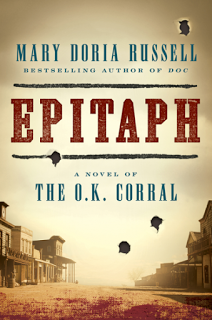 Last week I wrote about finding the characters for my next novel in the Legends series. My latest interview with Mary Doria Russell—the author of two renowned science fiction books,
The Sparrow
and
Children of God
, as well as the historical novels Epitaph, Doc,
Dreamers of the Day
and A Thread of Grace, the last nominated for a Pulitzer Prize—explores how even real people whom we think we know require rediscovery and compassionate understanding if they are to become viable characters.
Last week I wrote about finding the characters for my next novel in the Legends series. My latest interview with Mary Doria Russell—the author of two renowned science fiction books,
The Sparrow
and
Children of God
, as well as the historical novels Epitaph, Doc,
Dreamers of the Day
and A Thread of Grace, the last nominated for a Pulitzer Prize—explores how even real people whom we think we know require rediscovery and compassionate understanding if they are to become viable characters.The thirty-second gunfight at the O.K. Corral in Tombstone, Arizona, exposed the social and political tensions in a town where cattle ranchers rubbed elbows with thieves, nouveau riche mine owners, gamblers, drunks, and saloon girls a bare two decades after the outbreak of that great conflagration called the US Civil War. Tombstone’s two rival papers leapt on the story, which soon became national news, leading to exaggeration and the vilification of both sides. Only much later, under the influence of Wyatt Earp’s wife, did the story jell into the familiar narrative of one incorruptible lawman, loyal friends at his side, fighting a gang of incorrigible criminals determined to bring him down.
As with most morality tales, the reality is more complex and thus more interesting. As Doria Russell mentions during our conversation, Wyatt Earp was both a law-abiding teetotaler and a self-appointed executioner, an abused child who fought for years to restrain the rage inside only to lose that battle for a few crucial days. His friend Doc Holliday, consigned by history to the dual role of gambler and ruthless killer, was in fact a tubercular dentist who adored a good book, had a classical education, and played the piano with skill. His goal in life was to fix teeth, but gambling paid the bills—a reality that shamed him so deeply that he denied it for years. Thomas McLaury, who ended up on the wrong side of Holliday’s pistol, was a peaceful farmer who grew alfalfa for the cattle ranchers and may not even have carried a gun to the fatal shootout.
“The less you know, the more you can be sure,” Doria Russell says. In Epitaph, she notes, “Who tells the story and why … That makes all the difference”—a comment as true of history as of historical fiction. And then there is the opening of The Sparrow: “The Jesuit scientists went to learn, not to proselytize. They went [to outer space] for the reason Jesuits have always gone to the farthest frontiers of human exploration. They went ad majorem Dei gloriam: for the greater glory of God. They meant no harm.” And yet in every case great harm results, whether the characters intend it or not. It almost has to. Otherwise, as writers say, there is no story. In the hands of this gifted teller of tales, the foibles of human nature are, more often than not, the source of both the harm and the intense poignancy of its effect on characters we have come to know, to appreciate, and even to love.
But don’t take it from me. Listen to the conversation. You can find it, as always, at New Books in Historical Fiction, where you will also find the rest of this post.
The Wild West of Zane Grey and John Wayne movies, with its clear divisions between good guys and bad guys, cowboys and Indians (never called Native Americans in this narrative), bears little resemblance to the brawling, boozy refuge for every Civil War-displaced vagabond, seeker of gold (copper, tin, silver, oil), and would-be financier that once constituted the US frontier. In two novels about Doc Holliday and his friends the Earps, Mary Doria Russell pulls back the curtain to reveal the social, economic, and political divides that in the 1870s and 1880s kept the land beyond the Mississippi a hotbed of lawlessness and vice mixed with occasional acts of heroism. Doc begins the story in Dodge City, Kansas, in 1878. Epitaph continues it a few years later in the Arizona Territory, focusing on the events leading up to and the aftermath of the gunfight at the O.K. Corral.
Tombstone, Arizona, is an example of everything right and wrong on the frontier. The silver mines have made huge fortunes for the businessmen and speculators who have flocked to town, especially in the aftermath of the Panic of 1873—a recession as, if not more, dramatic than that of 2008. The flood of money into politics has had its usual corrupting effect, and tension is brewing between those from the postbellum South seeking a better future and entrepreneurs arriving from the North. Cattlemen and gamblers, miners and ladies of the evening, thieves and lawmen—Tombstone has them all. So when the Clantons and their friends the McLaurys decide that the Earps and Doc Holliday are the source of their troubles and, after a long night of drinking, set out to even the score, thirty seconds of violence become a touchstone for both sides of what is wrong with the other.
But that was not the end of the story. Tombstone had “legs,” as journalists say, becoming a symbol of the Wild West at its wildest. Here, in Epitaph, Mary Doria Russell recovers the story behind and beyond the gunfight, with compassion for those who saw their lives changed by it, whether they stood with the Earps or against them.
Published on March 04, 2016 06:00
February 26, 2016
Head Hopping
 “Head hopping,” strictly speaking, refers to the habit some authors have of skipping from one character’s point of view to another’s within a single scene. In the nineteenth and early twentieth centuries, when most narrators were omniscient, head hopping was normal. Almost all of us encountered it in the books we read, or were assigned to read, in high school. The rise of movies has made it more common again, because the camera routinely shifts to show a given scene from varying angles. But for a while, head hopping was considered a no-no of the writing craft, and the advice is still handed out. Unless handled right, the shifting perspective can confuse readers, and the exposition needed to reintroduce clarity emphasizes the role of the narrator, destroying the illusion that one is experiencing the story through the viewpoint character’s senses.
“Head hopping,” strictly speaking, refers to the habit some authors have of skipping from one character’s point of view to another’s within a single scene. In the nineteenth and early twentieth centuries, when most narrators were omniscient, head hopping was normal. Almost all of us encountered it in the books we read, or were assigned to read, in high school. The rise of movies has made it more common again, because the camera routinely shifts to show a given scene from varying angles. But for a while, head hopping was considered a no-no of the writing craft, and the advice is still handed out. Unless handled right, the shifting perspective can confuse readers, and the exposition needed to reintroduce clarity emphasizes the role of the narrator, destroying the illusion that one is experiencing the story through the viewpoint character’s senses. Before I fell into writing fiction, I never noticed head hopping and so was never bothered by it. That was simply part of reading. Then I learned that head hopping was considered bad form, and now it drives me nuts. It’s like editing. Since I started working as a copy editor, I see typos everywhere. Very annoying, but what can one do?
The head hopping I’m writing about today, however, has nothing to do with switching points of view within scenes or even between chapters. As I get ready to release The Swan Princess into the world, I also have to prepare to reorient myself to new leads for The Vermilion Bird. I know from experience with Legends 2 and 3 that this will take longer than I would like. I need to find ways to understand the new hero and heroine: what they want, what they fear—and especially why they carry such huge chips on their shoulders and what might make them lower their guard enough to embrace the future I have planned for them. One of the basic rules of story is that protagonists change, for better (comedy) or worse (tragedy).
This rule does not always hold. In some cases, most notably in adventure stories and detective novels, the protagonist resists intense pressure to change in negative ways. But in my books, so far, protagonists grow. And boy, do these two need to grow. If they don’t, no one will want to read about them. Moreover, they’re going to kick and scream every step of the way. I can see that already.
It will, I admit, be fun to make them sweat, not least because both of them badly need to grow up. But until I’m certain that The Swan Princess is finished, I don’t dare start putting them through their paces. I have to stay in touch with Nasan and Daniil—who will, no doubt, appear in the new book as well.
Now, if you have never written a novel, you may think, “What is this woman on about? Authors create their characters. They can make them do whatever they want.” Well, no, not exactly. Characters may be fake people, but once the basic traits of their personalities are set, they can respond only in certain ways. If a person who has been established as a career woman announces for no reason in chapter 10 that she’s decided to pack in her high-stakes profession as a criminal defense lawyer for an apron and two cats, readers will reject her as inconsistent—and so they should. She may make that choice by the end of the book, but not unless it’s 100 percent obvious what has been missing in her life that cooking and cats can supply. I know from experience that if as a novelist I am in touch with that character, I will not be able to write the dialogue for such an inconsistent decision. To me, that’s what writers’ block is.
If you have heard writers complain about their characters taking over the story, however, you would be justified in thinking that there is no problem. Don’t characters come into the world full-blown, ready to rip? No, that’s not exactly true either. Characters—especially series characters—may be created initially to serve a limited purpose. The heroine needs someone to bounce ideas off or to get in her way and make life less comfortable. The hero can’t strap on his own armor unless he becomes double-jointed, so he has to have a manservant do it for him. The story requires a marriage or a birth, and the author creates a new character to fit the bill. That criminal defense lawyer can’t do much without accused criminals to defend. In that sense, writers do create their characters and determine their fates.
But once created, characters don’t always stay within their boxes. Protagonists grow, but so do secondary characters. One of the problems in writing a book is to keep the secondary characters from developing to the point where they become more interesting than the hero/heroine and thus take over the story. When this happens in a series, it’s time for a sequel. Hence The Golden Lynx focused on Nasan and Daniil, but I found Ogodai so appealing that I gave him his own book, The Winged Horse. He needed an opponent, whom I originally intended to kill off—until I realized that the opponent had in fact had been quite hard done to. And that the opponent was the perfect match for another difficult secondary character who also pushed at the bars of her cage and might have a story to tell. But I didn’t want to forget Nasan and Daniil, not least because I had of necessity left their relationship unfinished. So I set the opponent aside (with considerable regret) to bring the other two back in The Swan Princess. It took months to reconnect with them, and throughout that time I pushed the other pair onto the back burner of my brain. With luck, it will not take another six months to restart the fire.
But that’s the writing life—at least, my writing life. And really, I wouldn’t have it any other way.
Image © DVARG/Shutterstock no. 87962452.
Published on February 26, 2016 06:00
February 19, 2016
Lord of the Dance
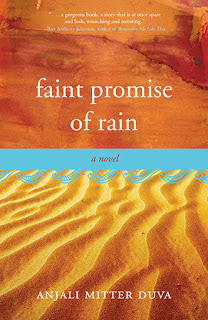 If you’ve ever read my bio, either here or on my website or at the back of one of my novels, you’ll know that I love to dance. I took classical ballet classes for more than 25 years, and I still practice on my own at least five times a week (my skills are no better than fair, but it’s a form of exercise I enjoy, so who cares?). So when I learned that Anjali Mitter Duva’s debut novel was not just about a dancer but about the evolution of Indian classical dance in response to the Mughal invasion from Central Asia, I knew I had to interview her. You can hear the results for free on the New Books Network site.
If you’ve ever read my bio, either here or on my website or at the back of one of my novels, you’ll know that I love to dance. I took classical ballet classes for more than 25 years, and I still practice on my own at least five times a week (my skills are no better than fair, but it’s a form of exercise I enjoy, so who cares?). So when I learned that Anjali Mitter Duva’s debut novel was not just about a dancer but about the evolution of Indian classical dance in response to the Mughal invasion from Central Asia, I knew I had to interview her. You can hear the results for free on the New Books Network site.I was not disappointed. Duva talks at length about kathak dance, its history and practice, and the spiritual and physical experience of engaging in it. She also talks about her wonderful characters, struggling to find their place in a world changing before their eyes while living in a desert climate so harsh that children can reach adolescence without ever seeing rain. This is a book about family and culture, so richly described that you will smell the spices and hear the beat of heels drumming against the floors. It is also a book about contradictions: the brides of Lord Krishna, who dance to worship him, are sold off to the highest bidder among the local elite, who then becomes their patron and uses them as he pleases. Yet despite the odds against her, Duva’s heroine, Adhira, manages to find a way out.
The rest of this post comes from New Books in Historical Fiction, which now has a brand-new URL as the result of an upgrade to the network’s Web presence. For a while, the old addresses will redirect, but you can find a complete list of interviews at this link.
In 1526, Babur the Tiger, the self-proclaimed ruler of Afghanistan, moved south and conquered the northwest section of what was then known as Hindustan. Babur, although accepted as padishah and emperor, never much cared for India, but his descendants flourished there until the British moved in more than three centuries later.
Faint Promise of Rain explores the early part of this transition. Two years before the death of Babur’s son Humayun, a girl child is born to the temple dance master near Jaisalmer, a citadel in present-day Rajasthan. Adhira’s birth is considered auspicious, because it takes place during one of this desert area’s rare rainstorms. To Adhira’s father, the divine blessing placed on his child means that she will finally be the one to carry on the kathak dance tradition that has defined his life. Adhira’s mother worries that no little girl should carry the burden of such great expectations. And Adhira’s older brother Mahendra cannot sustain his own service to the temple in the face of the increasing strength and influence wielded by the armies of Emperor Akbar, Babur’s grandson. Mahendra, although a dancer by instinct and by training, becomes convinced that his duty to protect his family requires him to fight.
Against this backdrop of religious, cultural, and military conflict, Anjali Mitter Duva paints a richly colored, exquisitely detailed picture of a world in flux. At the heart of the painting stands Adhira, who through her love for Krishna and the dance slowly finds a pathway to a future that is all her own.
Finally, a quick update on The Swan Princess, which has gone to typesetting and should be released on or about April 15. You can find out more about that at my website.
Published on February 19, 2016 06:00
February 12, 2016
Love in the Collapse of Communism
 Leningrad, 1937: Roman, an artist who needs to eat, has become an expert in air-brushing “enemies of the people” out of photographs. One of his earliest subjects is his own brother, an unrepentant devotee of religion in Stalin’s atheist communist state. As an act of resistance—atonement? compensation? revenge? even Roman isn’t sure—the artist paints his brother’s face into every other image he doctors. The head of a party boss added to a nineteenth-century painting, the face of an unknown worker in the background. It becomes his signature, his legacy. Then Roman is asked to air-brush out a ballerina accused of espionage for a foreign power. But the ballerina looks like his sister-in-law, and Roman can’t bear to erase his family twice …
Leningrad, 1937: Roman, an artist who needs to eat, has become an expert in air-brushing “enemies of the people” out of photographs. One of his earliest subjects is his own brother, an unrepentant devotee of religion in Stalin’s atheist communist state. As an act of resistance—atonement? compensation? revenge? even Roman isn’t sure—the artist paints his brother’s face into every other image he doctors. The head of a party boss added to a nineteenth-century painting, the face of an unknown worker in the background. It becomes his signature, his legacy. Then Roman is asked to air-brush out a ballerina accused of espionage for a foreign power. But the ballerina looks like his sister-in-law, and Roman can’t bear to erase his family twice …Thus begins Anthony Marra’s The Tsar of Love and Techno, a collection of riveting interlocked short stories that ramble from the Arctic Circle to Chechnya and from the 1930s to the present. Along the way, we get a clear sense of a world crumbling under the impact of communism and its collapse: literally crumbling, in the ruins of Grozny and the nickel mines of Kirovsk, a former prison camp where “the falling snow was tinged with color depending on what had been in the furnaces the previous day: the red of iron, the blue of cobalt, the eggy yellow of nickel” (63).
The format of the book draws from a mixtape given to Kolya, one of the recurring characters, by his younger brother. A genuine Maxell cassette, a rarity in the late years of the USSR, the tape accompanies Kolya to war in Chechnya and back to the nickel mines. Its presence sustains him in his darkest hours. The book, too, is a literary mixtape, with Sides A and B and a long Intermission at its center. It’s wonderfully complex and wonderfully complete, posing questions to which the reader suddenly perceives the answer five stories later. The language is both beautiful and stark, the characters simultaneously sympathetic and severely, even irreparably flawed.
Given my interest in Russian and Soviet history, it will hardly surprise followers of this blog that I found myself drawn to Roman and his compatriots. I requested The Tsar of Love and Techno initially for a New Books in Historical Fiction interview, and I still regret that the interview never took place. It was scheduled for the week between Christmas and New Year’s, and I suspect the timing doomed it. So I decided to write this blog post instead. If you have any curiosity about the last years of the USSR and the post-Soviet consensus, up to and including Vladimir Putin, this book is for you.
Expect to see more posts like this one. Despite the occasional scheduling problem, New Books in Historical Fiction—and the New Books Network in general—have been growing rapidly in popularity, and I now have more books being sent to me than I have hours available for interviews. A lovely place to be, I admit. So when a podcast interview doesn’t work out for whatever reason, I will be shifting some of the coverage here—as I did last week with Bernard Cornwell’s Warriors of the Storm . On the Friday after International Women’s Day (March 8; the Friday is March 11), for example, I will feature Fall of Poppies, a new collection of short stories by women about love and the Great War. There are so many fantastic books. It’s a privilege to have the chance to comment on as many of them as possible, and I look forward to sharing those comments with you.
That said, I must confess that I will soon be adding another book of my own to the massive piles of available reading material. One more editing pass for style and consistency, and The Swan Princess goes to typesetting. And just to whet your appetite a little, I’ve pasted in two of the early reviews below. Stay tuned for the release date!
“Lyrical and compelling, The Swan Princess draws the reader into the world of sixteenth-century Russia, a world unfamiliar to many readers, which becomes vividly real in the hands of this master storyteller. The characters of Nasan, Daniil, and the others leap off the page. Perhaps most intriguing is the portrayal of the clash between the two vibrant but alien cultures of the Russians and the Tatars—frequently at war, occasionally bound by an uneasy and watchful peace.” —Ann Swinfen, author of Voyage to Muscovy
“An action and suspense-infused historical adventure that kept me turning the pages right to the end. The characters are so well-drawn, the historical facts so cleverly woven into the narrative, time and place so brilliantly evoked, I felt I was experiencing sixteenth-century Russia firsthand.” —Liza Perrat, author of the Bone Angel Trilogy
Published on February 12, 2016 06:00
February 5, 2016
True Confessions
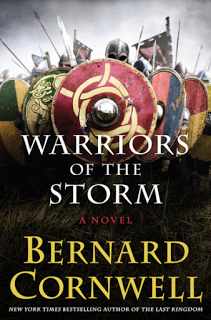 I have to admit: I have a sneaking fondness for Uhtred of Bebbanburg. Saying so makes me feel like an entrant into a Twelve Steps program—Readers Anonymous, say: “I am C.P. Lesley, and I like Uhtred.”
I have to admit: I have a sneaking fondness for Uhtred of Bebbanburg. Saying so makes me feel like an entrant into a Twelve Steps program—Readers Anonymous, say: “I am C.P. Lesley, and I like Uhtred.” The reason for my hesitation says nothing about the quality of the books. Rather, Uhtred and the books that have given him life are quite different from anything I normally read. In fact, had it not been for New Books in Historical Fiction, I expect that Uhtred and I would still be the most casual of acquaintances. Fortunately, NBHF exists, and my reading horizons have expanded as a result.
For those of you who don’t know about Uhtred, he is the hero of Bernard Cornwell’s Last Kingdom series (formerly known as the Saxon Tales) and the subject of a blockbuster miniseries developed by the BBC. I encountered Uhtred first when Cornwell’s publisher, HarperCollins, sent me The Pagan Lord , which is actually no. 7 in the series. I have since read five of the books; the remaining four are waiting on my tablet for me to find some free time. Warriors of the Storm , the latest book in Uhtred’s saga, came out two weeks ago.
Bernard Cornwell took part in a wonderful and informative discussion on New Books in Historical Fiction in June 2014. His alter ego is, to put it mildly, not so accommodating, although he has his own kind of charm. Uhtred is a battle-hardened warrior, a devotee of the Norse gods in a Christianized land, a Saxon raised by Danes who fights for the unification of a land that often fails to appreciate him and for the expansion of a religion that he at best tolerates, an outcast kept from the fortress of his birth by his own uncle. He is fierce and unrelenting to those he hates but steadfast in support of those he loves—especially Aethelflaed, daughter of King Alfred the Great. Relentlessly—piece by piece, battle by battle, book by book—Uhtred pushes forward King Alfred’s cause: the unification of England from a collection of warring, mostly conquered parts. A century and a half before the Norman Conquest of 1066, the unification of England still hangs in the balance, but Uhtred, although by book 9 an aging warrior, is determined to see that cause succeed. Warriors of the Storm, in particular, is one battle after another, as Uhtred struggles not only against a new Danish chieftain but against the inexperience and gullibility of those on his own side.
In an interesting coincidence, my most recent interview for New Books in Historical Fiction was with Joan Schweighardt, the author of The Last Wife of Attila the Hun . A very different book—set five hundred years earlier and from a woman’s perspective. Yet what pulls these two novels together is the pagan mythology that infuses their characters’ worldview. Uhtred believes in a universe where the gods play with human lives to entertain themselves, where the Norns weave destinies and cut life threads on a whim, where a man can hope to spend eternity carousing in Valhalla so long as he lives bravely and dies sword in hand. Gudrun, the heroine of The Last Wife, carries a sword that lays a curse on its owner, stolen as part of a dragon’s treasure by a warrior in search of valor and glory and destined to punish (she hopes) an enemy who has destroyed her people and appears invincible. Gudrun and Uhtred would understand each other if they ever met.
So let’s hear it for Uhtred, unbowed and unrepentant. May he enjoy many more battles before, sword in hand, he joins his beloved Danes in Valhalla in perpetual carousing and song.
Published on February 05, 2016 06:00
January 29, 2016
Conversation with Jane Lindskold—Part 2
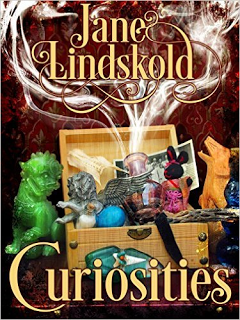 And here is the second part of my interview with Jane Lindskold. Today we talk about inspiration, themes, and publishing in today’s world. My questions are in italics. For the first part of the interview, click here.
And here is the second part of my interview with Jane Lindskold. Today we talk about inspiration, themes, and publishing in today’s world. My questions are in italics. For the first part of the interview, click here.For more information on Jane and where to find her books, see her bio, below. And remember to follow her blog, which she updates each Wednesday, with additional weekly features on Thursdays and Fridays.
Several of your short stories play with words, especially words with multiple meanings (“Cheesecake,” from which I’m still recovering!) or customary usages that on reflection seem odd (“Good Boy”). Most writers love language, but would it be fair to say that for you words themselves act as sources of inspiration?
Oh, yeah. Definitely! Glad “Cheesecake” had an impact. I read that one at our local con this past summer and really enjoyed the audience reaction. I love words on all sorts of levels. I deeply regret that I am pretty much monolingual, because the windows words provide into a culture and its values fascinate me.
I’m a long-time (as in long, long before the current fandom was even born) fan of Japanese anime. I prefer subtitled to dubbed because, while I don’t understand Japanese, I have picked up fragments of form of address, common usages, etc., and these let me get that tiny bit closer to understanding the cultural subtext.
Other than those mentioned above, what themes do you see running through your work? What questions perennially draw you?
Despite—or perhaps because of—my background in English literature (I hold a PhD from Fordham University), I am not interested in being deliberately “literary.” That some people have found my works such is lovely, but it’s not a goal. I see myself as a storyteller first and foremost.
Therefore, I actually go out of my way not to think about themes or suchlike. That’s for other people, if they care to do so. I shocked a couple of writer friends recently when I mentioned that I have deliberately destroyed the handwritten first draft manuscripts of some of my early novels. I’m not interested in leaving a literary heritage. I’m interested in telling a good story.
On your blog, you recently urged prospective authors to write for the love of it rather than in the expectation of being published. How do you see the current publishing climate, especially for debut authors? What changes, if any, would benefit writers and readers?
We both know the climate is terrible for writers. I think it’s actually easier to be a debut author than an established one. However, since an author can only keep that Wow Factor for one, maybe two books, that’s cold comfort.
Why the excitement about the New Flavor? Mostly because publishers seem less willing to cultivate what used to be called the “midlist”—those authors with a solid, non-bestselling but strong following—and are constantly looking for the next bestseller.
They don’t seem to have noticed that the Big Excitement of a few years ago, is no longer so. Maybe they’ll figure out that people like George R. R. Martin were solid midlisters for a long, long time before becoming bestsellers. Maybe not.
Jane, thank you so much for taking the time to answer my questions. Best wishes to you and your writing!
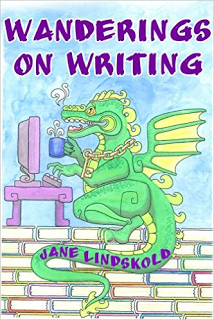 Author Bio
Author BioJane Lindskold has published twenty-five or so novels since Brother to Dragons, Companion to Owls in 1994, as well as over seventy short stories and a nonfiction collection, Wanderings on Writing. Some of her best-known and most highly acclaimed books appear in four series: “Athanor,” “Breaking the Wall,” “The Firekeeper Saga,” and “Artemis Awakening.” She has also written two “Stephanie Harrington” novels in collaboration with David Weber. Learn more about her at her website and via her interview with New Books in Science Fiction and Fantasy.
Published on January 29, 2016 06:00
January 22, 2016
The Power of Myth
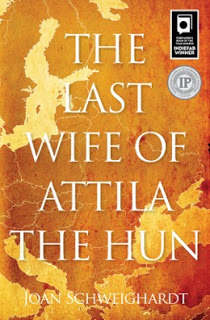 Go far enough back into history, and you find yourself in the land of myth. For some peoples, that line between the documented (history) and oral tradition (myth) appears later than for others. Empires leave records, as do organized states and religious institutions. But even where nomadic societies are literate, they tend to be best known through the descriptions of others—often biased descriptions written by the conquered, the fearful, or the hostile.
Go far enough back into history, and you find yourself in the land of myth. For some peoples, that line between the documented (history) and oral tradition (myth) appears later than for others. Empires leave records, as do organized states and religious institutions. But even where nomadic societies are literate, they tend to be best known through the descriptions of others—often biased descriptions written by the conquered, the fearful, or the hostile.So it is with Attila the Hun. Even his name is a Latin form; probably the original was Atli. In my interview with Joan Schweighardt, we discuss (among other things) the power of legends both Hunnic and Germanic, and how the novelist can blend mythology and history to create a powerful, compelling story.
As ever, the rest of this post comes from New Books in Historical Fiction.
Long before Genghis Khan set off to conquer the known world, the pattern of steppe warriors attacking—and often defeating—settled empires was well established. Only a few names of those who led these effective but mostly short-lived campaigns have become cultural references familiar to a general audience, but Attila the Hun looms large in that group—almost as large as Genghis himself. In the fifth century, the period covered by The Last Wife of Attila the Hun (Booktrope Editions, 2015), Attila kept both the eastern and the western Roman empires on their figurative toes, despite their vastly greater military and economic resources.
Into this charged atmosphere comes Gudrun, a young Burgundian noblewoman determined to exact vengeance for the destruction of her people at Attila’s hands. She offers him a golden sword of magical power that, according to legend, inflicts a curse on its owner. She hopes Attila will become its next victim. But as the days turn into weeks and Gudrun becomes first a prisoner, then a servant, in the Huns’ camp, she fears that even the sword’s magic may not be strong enough to defeat Attila. Then he decides to marry her …
Joan Schweighardt effortlessly interweaves the history surrounding the turbulent end of the western Roman Empire with the legends that sparked Wagner’s Ring Cycle. The result is a rich and complex tapestry that will draw readers into a long-forgotten world.
For Joan’s guest post, which also addresses this question, see “Dealing with the Dragon.”
Published on January 22, 2016 10:25
January 15, 2016
Conversation with Jane Lindskold—Part 1
 Today I’m delighted to welcome one of my favorite authors, Jane Lindskold, who was kind enough to agree to a Q&A and wrote such generous answers that I’m presenting them in two parts. Today we look at some of the elements that characterize her series. My questions are in italics.
Today I’m delighted to welcome one of my favorite authors, Jane Lindskold, who was kind enough to agree to a Q&A and wrote such generous answers that I’m presenting them in two parts. Today we look at some of the elements that characterize her series. My questions are in italics.For more information on Jane and where to find her books, see her bio, below. And make sure to follow her blog.
I came to your novels as many readers probably did, through “The Firekeeper Saga.” I picked up Through Wolf’s Eyes at the local bookstore and fell in love with it. What really drew me in was Firekeeper, who is a classic “wild child,” raised by animals in the woods. Even for fiction, which often portrays “fish out of water,” a girl who sees herself as a wolf is the ultimate outsider. Can you tell us, without giving away major plot points, something about how Firekeeper became a wolf and what insights that gives her into the human world she has to rejoin?
Firekeeper became a “wolf” by being the sole survivor of a colony that is destroyed by fire. She’s completely human biologically, but wolf by socialization. This means she comes to most issues from a completely different perspective. As someone commented at the time the first book came out, her wolfish mindset makes her amazingly adept at figuring out complex political problems—although her solutions can be terrifyingly weird.
Oh, just to clarify, Firekeeper doesn’t “have to” rejoin human society—not in the way Kipling forced Mowgli to do so, for example. She chooses to take a look at her birth heritage, but she is never rejected by her adoptive people—nor does she reject them.
Deep, complex relationships between animals and humans seem to be a theme running through your work. The Changer is a shapeshifter who can take both human and animal forms. Firekeeper travels with a male wolf, Blind Seer, and their relationship highlights Firekeeper’s simultaneous place in and alienation from both wolf and human societies. Adara the Huntress has a demiurge, the female puma Sand Shadow. Some of your short stories also explore this theme in various ways. What do these pairings make it possible for you, the author, to do that can’t be done by focusing entirely on human characters?
I don’t write about human/animal pairings from the point of view of “making possible” anything at all. I just like different perspectives. I like trying to think how events would look from an animal point of view.
Sex is a great example. Humans are rare in the animal kingdom in that they are effectively in heat all the time. Being in heat is a situation that skews human societies on so very many levels. Most animals, by contrast, are in heat only seasonally. Sex is a relatively small part of bonds. Therefore, those animal characters I write are fascinated by the human obsession with sex—they tend to see it as rather shallow.
In Curiosities, your recent short story collection, you mention your interest in mythology, folklore, and archeology. Even before I read that, I had noticed the importance of mythology in different contexts (the “Firekeeper,” “Athanor,” and now “Artemis Awakening” series) and wanted to ask you about it. How do you envision the role of mythology in your work? What does it offer you as a writer?
I’m a mythology junkie and have been so since I was in single digits. When I use myth and/or legend and/or folklore, I’m simply playing with something that I love. My folklore and mythology collection is a permanent fixture in my office.
Certainly, reading mythology from all around the world and from many time periods has shaped my mind. Even though I was reared in a monotheistic culture, I never really bought into it because I was aware how very many options there were and how many different shapes the search to define the divine and answer metaphysical questions has taken in human culture.
One thing I enjoy when writing fantasy not set on our world is working out what shape the religions will have taken. Unlike many writers, who simply take an existing religion and file off the serial numbers, I design from the ground up.
As a historical novelist, I strive to re-create a world that once existed, knowing that I can never really shed my modern perspective or master the many details of everyday life in a particular past. As a writer of science fiction, you need to create your own world with coherent rules. Where does Artemis come from? How did you go about developing it?
The “Artemis” books were in part inspired by a desire to look at a culture that knew—didn’t guess at or take on faith but knew—the answer to those perennial questions that are usually the foundation of religion: “Why were we created?” “Who created us?” “What is our purpose for existing?” even, “Why is there death?”
The two books I have written are set in a relatively small part of a planetary culture, so the impact of the slaughter of the seegnur and death of machines has not been as fully examined as I would have liked. However, I did try to hint that it created any number of fragmentations of belief and in the moral codes that evolve from belief systems.
Author Bio
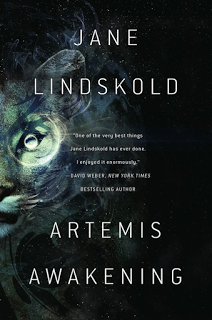 Jane Lindskold has published twenty-five or so novels since Brother to Dragons, Companion to Owls in 1994, as well as over seventy short stories and a nonfiction collection, Wanderings on Writing. Some of her best-known and most highly acclaimed books appear in four series: “Athanor,” “Breaking the Wall,” “The Firekeeper Saga,” and “Artemis Awakening.” She has also written two “Stephanie Harrington” novels in collaboration with David Weber. Learn more about her at her website and via her interview with New Books in Science Fiction and Fantasy.
Jane Lindskold has published twenty-five or so novels since Brother to Dragons, Companion to Owls in 1994, as well as over seventy short stories and a nonfiction collection, Wanderings on Writing. Some of her best-known and most highly acclaimed books appear in four series: “Athanor,” “Breaking the Wall,” “The Firekeeper Saga,” and “Artemis Awakening.” She has also written two “Stephanie Harrington” novels in collaboration with David Weber. Learn more about her at her website and via her interview with New Books in Science Fiction and Fantasy.The rest of Jane’s answers will appear soon. Watch for that link!
Published on January 15, 2016 06:00
January 8, 2016
The Sources That Aren’t
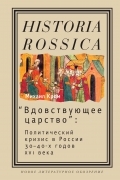 Contrary to plan, I spent little of my two-week Christmas vacation revising The Swan Princess. I thought about revisions. I made a list of points to address in the final draft. I entered minor corrections suggested by my beta readers. But what I actually did was research—lots and lots of research.
Contrary to plan, I spent little of my two-week Christmas vacation revising The Swan Princess. I thought about revisions. I made a list of points to address in the final draft. I entered minor corrections suggested by my beta readers. But what I actually did was research—lots and lots of research.The shift came about by accident. As I put Swan Princess on the back burner while waiting for comments—always a good idea, because it takes a month or so of downtime to make the essential switch from writer to reader that reveals the flaws in a book—I turned to Legends 4, The Vermilion Bird, only to realize that I didn’t know enough about the political situation in Muscovy in 1537 to construct a plot free of major howlers. As I dug through chronicle variants and historical literature, I remembered seeing a review of a book devoted to the minority of Ivan the Terrible (1533–47). Figuring this book must have something to say about the dramatic events of 1537, I set out in search of it.
The usual sources proved disappointing. Prices were high, availability low. I turned to WorldCat, which listed a couple of nearby copies. Russia in 1533–47 is not most scholars’ cup of tea, so the chances of obtaining the book seemed promising. I trotted over to the local library and put in a request, causing hilarity among the staff (882 pages in Russian—is she nuts?). And within a week, I was holding a copy of Mikhail Krom’s The “Widowed Kingdom”: The Political Crisis in Russia in the 1530s–40s, with a generous six-week loan period. Better yet, one of my colleagues made a brief trip to St. Petersburg, where at my request he secured a copy of Krom’s book for $10 plus US postage. It arrived at my door two days after my vacation began. At that point, I returned the library copy and could have left the book for later.
But I didn’t, because I was hooked. I realized within the first few pages that I had a treasure trove in my hands. Krom spent fifteen years of his life studying every document he could find on this short but troubled period in Russian history. If I’d had the book when I was plotting The Golden Lynx, it would have enriched that story. I saw information I could use in Swan Princess, as well as a detailed account of the 1537 events that had brought me to the book in the first place—and the repercussions of those events, which extended into 1538 and will form the background to Legends 5, The Shattered Drum. That’s why I put the revisions on hold while I took notes.
Krom’s book is a doorstop. I find it fascinating (although I’ve only made it through 300 of the 882 pages so far), but I’ll be the first to admit that people who don’t have a mad yen to know everything possible about the court during Ivan the Terrible’s childhood are unlikely to share my enthusiasm. Even if I had fifteen years to spare, there is no way I could duplicate the wealth of information and analysis here: it is the kind of topic that demands a scholar resident in the country being examined, not a visitor flitting in and out of the archives.
Yet for all the anticipated and unsuspected gems in this book, there are questions that it cannot answer, because of the nature of the sources. Chronicles are the premodern equivalent of Pravda: they present official history—with a strong religious bent, since they were often written by monks—and thus offer a snapshot of their world as those in power wanted that world to be seen. If a story is told one way and then another way, we can weigh the differing versions, read them against the grain while keeping in mind when they were written, test them against non-chronicle sources, and hope for a glimpse of the truth. But sometimes the story is too dangerous to tell, so the chronicler abbreviates it or eliminates it. These are the “sources that aren’t.”
For example, I wanted to know whether Prince Andrei of Staritsa attended the funeral of his older brother, Prince Yuri of Dmitrov, in August 1536. Seems like a simple enough question, right? One can assume, given the mores of the time, that the answer must be yes. Prince Andrei (and Prince Yuri, too) had been present for the deathbed farewells and the funeral of their oldest brother, Grand Prince Vasily III, in December 1533. The chronicler is all over that one—pages and pages describing every action taken and word said, some of it quite moving. But a week after Vasily’s death, the boyars imprisoned Yuri for plotting to put himself on the throne, and Yuri remained in a Kremlin cell until he died. The entire chronicle entry on his passing—in Krom and in every version available to me—says, “In that same year on 3 August, on Thursday at three o’clock in the afternoon, Prince Yuri Ivanovich died in suffering, of hunger, and was put in the Archangel [Michael Cathedral, where all male members of the dynasty were buried] in Moscow.” The next sentence talks about a fortress being built, and the one after that about improving the fortifications of Vologda earlier in the summer (which happens to be important for Swan Princess, although I won’t say why). But not a word about Yuri’s funeral and who presided over it or attended it, even though he was Ivan the Terrible’s uncle and heir to the throne from Vasily’s accession in 1505 to Ivan’s birth in 1530. And of course, no hint that Yuri’s belief in his right to become grand prince was justified, to a degree: succession in Russia had traditionally gone brother to brother, and while the royal house of Moscow had been moving away from that practice, this case was a textbook example of why the old ways might work better. Ivan was three years old when his father died and in no way comparable to an adult uncle in his capacity to rule. That was the very circumstance that made Yuri and his story so dangerous.
We can guess that Yuri—a prisoner who died of mistreatment if not deliberate murder and an embarrassment to the royal dynasty—received a hurried burial attended by no one except the officiating priest. Orthodox burials typically took place on the day of death or the next day, which didn’t leave much time to summon kinsfolk from other towns. But starvation is not a rapid death, and Yuri’s jailers in the Moscow Kremlin must have seen him weaken. If nothing else, one would expect them to have alerted the higher-ups. Certainly, members of the government headed by Grand Princess Elena Glinskaya could have notified Prince Andrei had they chosen to do so. Staritsa is about 100 miles from Moscow: a healthy rider on a series of good horses and unencumbered by baggage could cover that distance in two to three days. Yet either no message was sent, or Andrei did not respond, or he did respond but the chronicler chose not to mention his arrival. We don’t know which.
A month later, Grand Princess Elena, in the name of her son, summoned Andrei to military service against Kazan, and he refused. That tale the chronicler gives us in full, in a one-sided and tendentious presentation that nonetheless permits glimpses of the underlying story. Was Andrei sick, as he claimed? Was he angry at being denied the opportunity to see his dying brother? Did he fear ending up in the same Kremlin cell? The answers rest in part on whether Andrei had visited Moscow in August and returned unscathed to his own principality, but that information we do not have. What we have instead is a picture of a family in disarray, so riven with suspicion that it turns against its own members, to the point of letting them die in ignominy and want. For a novelist, that picture is, perhaps, compelling enough.
But that, as they say, is a story for another day.
Published on January 08, 2016 08:49
January 1, 2016
And Hello, 2016!
 New Year’s Day prompts most of us to think anew about how to make our lives better, more satisfying, more productive, and so on. Since I began this blog in June 2012, I have used the first post of the year to set goals and the last post to assess my progress or lack thereof. This is somewhat amusing, since in real life I never make resolutions. Either I do things or I don’t, and declaring goals in advance makes little difference to the outcome. But I do find it helpful to think a few times a year about my career as a writer and publisher and what I need to do to succeed.
New Year’s Day prompts most of us to think anew about how to make our lives better, more satisfying, more productive, and so on. Since I began this blog in June 2012, I have used the first post of the year to set goals and the last post to assess my progress or lack thereof. This is somewhat amusing, since in real life I never make resolutions. Either I do things or I don’t, and declaring goals in advance makes little difference to the outcome. But I do find it helpful to think a few times a year about my career as a writer and publisher and what I need to do to succeed.The list for 2016 includes:
(1) finishing the final draft of The Swan Princess and seeing it in print and e-book formats;
(2) making significant progress on The Vermilion Bird, preferably to the point of a full rough draft (even if it’s very rough);
(3) chairing a round table on the uses of historical fiction in the classroom, scheduled for November 2016 but not yet approved by the sponsoring organization;
(4) upping the number of my New Books in Historical Fiction interviews to one every three weeks, yielding eighteen for the year;
(5) maintaining my website and the Five Directions Press website—which means implementing the book recommendation posts, expanding the number of authors and titles available, filling out the More Books Worth Reading page, and keeping the news & events page up to date;
(6) posting to this blog every Friday;
(7) maintaining and strengthening my relationships with fellow writers; and
(8) continuing to improve my grasp of marketing, on both my own behalf and that of Five Directions Press.
Of course, I also have to keep making a living and finding time to write. And I have signed up for three GoodReads challenges for 2016, only because I can apply books to more than one category. These are the Read Women 2016 challenge (most of the books I read are by women, except for books associated with interviews, and living authors count for this one), the Dead Writers’ Society Genre Challenge (one book a month by a no-longer-with-us author in an assigned category), and the Birthday Challenge (one book a month by a deceased author born in that month).
Will I make it? Check back in December to find out. And between now and then, may you have a rich and rewarding 2016!
Image: Clipart no. 109546550.
Published on January 01, 2016 09:11



